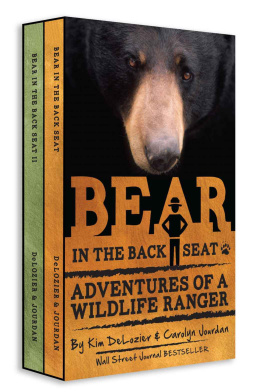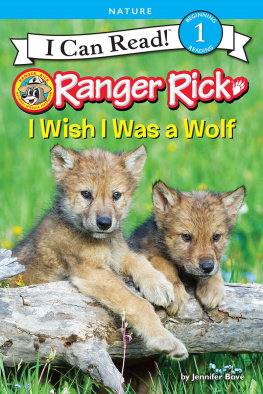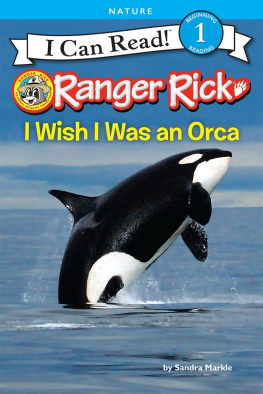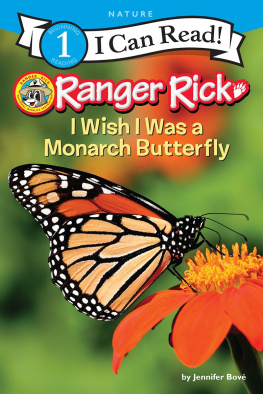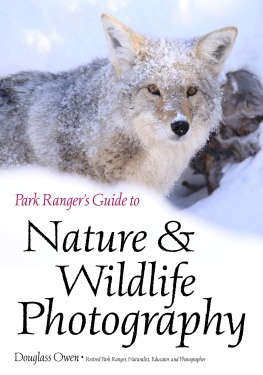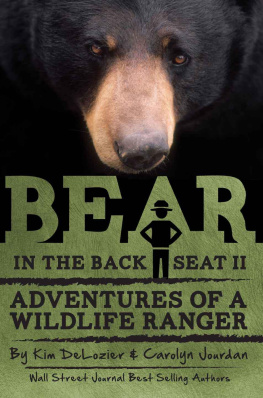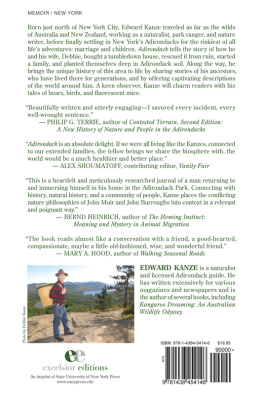Table of Contents
Bear in the Back Seat 1
Adventures of a Wildlife Ranger
in the Great Smoky Mountains National Park
by
Kim DeLozier &
Carolyn Jourdan
Copyright 2013 Kim DeLozier and Carolyn Jourdan
All rights reserved.
Published in the United States of America
ISBN 978-0-9885643-6-7
Bear in the Back Seat is on
Facebook at www.facebook.com/BlackBearBook
Twitter at twitter.com/BlackBearBook
Cover photo by Bill Lea
www.BillLea.com
Designed by Karen Key
Map of Great Smoky Mountains National Park
In this book Smoky Mountain dialect is rendered as it sounds. Appalachian speech is poetic and musical. Its sung as much as spoken, so a significant portion of the meaning is conveyed in the cadences and tones.
Dialect is used in conversation by people of all levels of education and intelligence, so no apostrophes will highlight dropped gs or word variants, as if they are errors. For the same reason, the local grammar is retained.
This was done to enable the reader to experience Smoky Mountain life and language intimately, as an insider would.

Wildlife Rangers in the Great Smoky Mountains National Park have developed their own special nomenclature for referring to Park vehicles. These animal nicknames, attributed to Ranger Rick Varner, are based on the size and power of the various trucks.
The Boar : Half-ton 4x4 Dodge pickup with an 8-cylinder engine. It has a winch mounted in the bed to pull cages and traps into the back. This was the most powerful truck. Its the one used to pull the elk trailer or move bear traps that had to be transported in the bed of a truck.
The Sow : Half-ton 4x4 Chevrolet extended cab pickup with a 6-cylinder engine. It has an 8 bed which made the truck difficult to maneuver in tight places. It was good for hauling people when conducting deer counts in Cades Cove. It was big, but not very tough.
The Shoat : Half-ton 4x4 Dodge pickup with a 6-cylinder engine. A medium-strength vehicle used for tasks like towing bear trap trailers or for checking hog traps.
The Piglet : Ford Ranger 4x4 pickup with a small engine. A light-duty vehicle used mainly for checking hog traps and for general transportation.
The Elk Calf : Chevrolet S-10 4x4 pickup with a small engine. A light-duty vehicle used mainly to track and locate elk and for general transportation.
Kims Truck : Ford Explorer 4x4 SUV with a 6-cylinder engine. It was used for general transportation and elk darting, and occasionally to pull larger trailers for boats. Although this vehicle was sometimes jokingly referred to as the grocery gitter , it was Kims favorite. It earned respect when used to rescue researchers and wildlife handlers after a sudden blizzard in Cataloochee, North Carolina when other vehicles got stuck in the deep snow.
Prologue
WHEN I WAS A KID showing steers in 4-H, I spent a lot of time waiting for someone old enough to drive to come get me and my animal and take us to the fairground. Now, more than thirty years later, I was still waiting for someone to come get me and my animal and take us somewhere. But instead of standing inside a comfortable barn with my hand-raised, immaculately-groomed steer while Dad brought the pickup truck around, this time I was huddled atop a ridge in the Great Smoky Mountains National Park during a fierce windstorm next to a drugged wild black bear, waiting for a stranger to come get us with a helicopter.
The wind was gusting so violently it was hard to imagine how any aircraft could possibly reach us. I prayed they were sending a good pilot. As I waited, I tried to look on the bright side. If I stayed upwind, the naturally pungent smell of the bear wasnt nearly as strong.

I THOUGHT I WANTED to be a full-time farmer. Id been successful raising and showing cattle and had driven tractors and other farm machinery since I was very young. When I was a senior in high school Id even won the East Tennessee Future Farmers of America Farm and Skills Tractor Driving Contest. Soon after that I started college, majoring in Agriculture at the University of Tennessee. I began in Animal Science, but several unpleasant incidents with cows on the family farm made me wonder if I shouldnt reconsider my choice.
My first strong hint that farm animals were going to be difficult to deal with was at a county steer show when one of my half-ton 4-H steers escaped from our farm truck, chased me through the Gold Rush Junction theme park, now called Dollywood, ran me up a tree, and then head-butted the tree repeatedly trying to knock me out of it so he could kill me. I thought my life was over. I still get goose bumps when I think about it.
Only after I was rescued did I realize Id saved myself by climbing a tree that had no limbs for the first ten feet! It had been like shinnying up a flagpole, but I was able to do it because it sure beat the alternative.

The second episode that made me question my vocation as a farmer happened when Dad was treating an infection in the rear hoof of a 1,000-pound Black Angus cow. He decided to use the task as an opportunity to teach me how to work on a cow safely, even when dealing with a difficult and sensitive area like a foot.
I had a bad feeling about it, but when Dad was in one of his instructional moods, all you could do was watch and listen. He put the big cow in a homemade holding chute at one end of our barn and then hollered for Mom to come and help him with his demonstration. Moms name was Barbara, but everyone called her Bob . She was only five feet tall but she was quick to put Dad in his place whenever he needed it; and sometimes he really needed it.
As I watched Dad get ready, I realized he was going to be kneeling directly behind the cow, treating an infected and sore foot. Rather than taking the normal precaution of placing a two-by-four board behind the animals rear legs to block its kicks, Dad decided to rely on an alternative safety method. He shouldve known better. He already had a crack in his skull from a cow kicking him when he was young.
He took hold of the cows tail and arched it over her back in a crescent shape, saying to Mom, Hold the tail like this, Bob.
Mom and I glanced at each other, both of us thinking, Here we go again .
Mom gamely took hold of the cows tail and held it arched backwards over the cows rump. Now she cant kick, Dad said, because her kicking nerve is pinched. But whatever you do, dont let go. If you let go, someone could get hurt.
My bad feelings about the situation intensified. Mom and I exchanged worried glances as Dad squatted down close behind the cows back legs. Dad, I said, shouldnt you put somethin behind that cows legs so she wont kick you?
Son, he said, You just watch and learn. Ive handled cows this way a hundred times! Dad looked toward Mom, and said, Now Bob, you keep that tail curled like I showed you.
She nodded to indicate her readiness.
When Dad took hold of the cows back foot, the normally peaceful and friendly cow started dancing around in the holding chute. Bob, Dad said, hold that tail!

